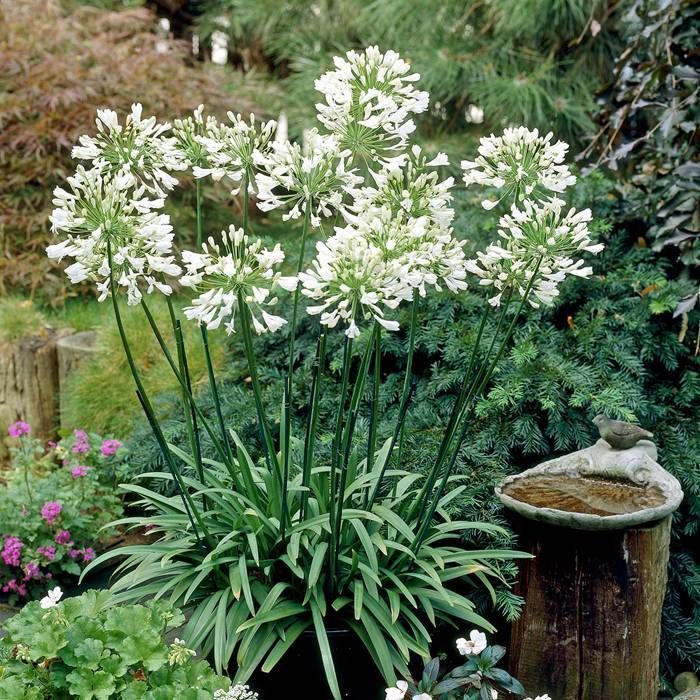Agapanthus Care Tips for Lush and Vibrant Flowers
Wiki Article
Understanding the Art of Agapanthus Care: Vital Steps for Healthy And Balanced Development and Vivid Flowers
In the world of gardening, the growing of agapanthus stands as a gratifying venture for those that seek to nurture these stylish blooming plants. From choosing the best range to mastering pruning methods, the journey towards cultivating growing agapanthus plants is complex and holds the essential to opening the full potential of these botanical gems.
Choosing the Right Agapanthus Selection

When picking the ideal Agapanthus variety for your yard, take into consideration aspects such as climate viability, flower shade, and development behavior. Furthermore, think about the climate in your region to make certain the Agapanthus range you pick can prosper in your details conditions. Understanding the development practice of different Agapanthus selections is essential for appropriate positioning within your garden.
Ideal Growing Conditions
Thinking about the optimal ecological needs is necessary for successful Agapanthus growing. Agapanthus plants are sensitive to cool temperatures and ought to be protected from frost during winter months.To ensure healthy and balanced growth and vivid blossoms, plant Agapanthus light bulbs at a deepness of concerning 2-4 inches and area them 8-12 inches apart. Mulching around the base of the plants helps preserve dampness and subdues weed development.
Watering and Fertilizing Tips
Preserving proper wetness levels and offering vital nutrients are crucial elements in the care routine for Agapanthus plants. When it concerns sprinkling Agapanthus, it is essential to strike an equilibrium. If overwatered, these plants choose consistently moist dirt yet are vulnerable to root rot. Throughout the expanding season, water deeply when a week, making sure the soil is well-draining to prevent waterlogging. In hotter environments or during periods of dry spell, more frequent watering might be required to maintain the soil uniformly wet. However, reduce watering in the wintertime to avoid waterlogged problems.Feeding Agapanthus is important for advertising healthy development and respected blooms. Use a balanced plant food, such as a 10-10-10 formula, in the very early spring as new growth arises. Repeat this application every 6-8 weeks throughout the growing period. Avoid extreme fertilization, as it can cause lush vegetation at the cost of blossoms. Constantly adhere to the maker's instructions for proper dilution and application methods. By adhering to these watering reference and fertilizing suggestions, you can ensure your Agapanthus plants flourish and generate vibrant, resilient flowers.
Trimming Methods for Agapanthus
Pruning Agapanthus plants at the ideal times and with appropriate methods is vital for maintaining their health and advertising optimal growth and blooming. The ideal time to trim Agapanthus is in late winter season or company website early springtime before brand-new development arises.For flowered stems, wait until the blooms have withered and afterwards cut them back to the base. This not just cleans up the plant's look yet likewise encourages the growth of new flower buds. Deadheading invested flowers can additionally redirect the plant's energy into creating even more flowers as opposed to setting seeds. Nevertheless, if you desire to gather seeds for proliferation, leave some blossoms to mature and completely dry on the plant.
Keep in mind to utilize clean, sharp tools to make exact cuts and decrease the threat of presenting diseases. Agapanthus. Routine pruning will certainly help maintain your Agapanthus looking healthy and neat while making certain an abundant display of attractive flowers
Handling Usual Insects and Diseases
After ensuring correct trimming methods for Agapanthus, it is vital to resolve usual parasites and illness that can affect the health and vitality of these plants. Agapanthus plants are typically durable yet can still succumb to specific problems. One common pest that impacts Agapanthus is the Agapanthus gall midge. This small, orange fly lays its eggs in the foliage, resulting in distorted development and blossom buds that fall short to open up. To fight this parasite, trim and destroy any damaged plant parts and think about using insecticidal soap.An additional typical issue is fungal leaf place, which provides as dark lesions on the leaves. To stop fungal conditions, make certain great air blood circulation around the plants, prevent overhanging watering, and get rid of any infected fallen leaves promptly. Furthermore, Agapanthus plants can struggle with origin rot if they are grown in badly draining soil. To avoid this, plant Agapanthus in well-draining dirt and stay clear of overwatering. By being cautious and taking prompt action against bugs and diseases, you can aid your Agapanthus plants grow and generate lively blossoms.

Verdict
To conclude, understanding the art of agapanthus treatment involves picking the right range, providing excellent planting problems, appropriate watering and fertilizing, ideal trimming methods, and resolving common insects and illness. By complying with these essential actions, you can guarantee healthy why not try these out development and lively blossoms for your agapanthus plants. Keep in mind to on a regular basis keep an eye on and preserve your plants to promote their general wellness and longevity.To make certain healthy growth and lively flowers, plant Agapanthus light bulbs at a deepness of regarding 2-4 inches and space them 8-12 inches apart. By complying with these watering and feeding suggestions, you can ensure your Agapanthus plants grow and create dynamic, durable blossoms.
One common insect that influences Agapanthus is the Agapanthus gall midget. Additionally, Agapanthus plants can suffer from origin rot if they are planted in poorly draining pipes soil. By adhering to these essential steps, you can make sure healthy and balanced growth and dynamic blooms for your agapanthus plants.
Report this wiki page